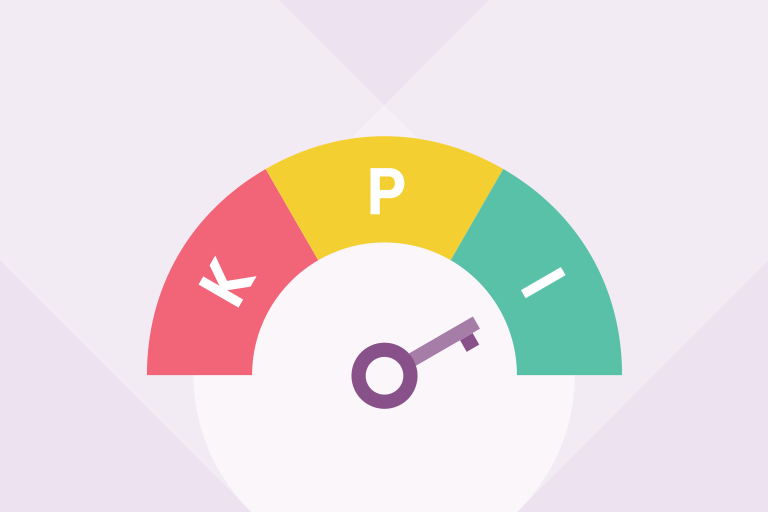You know semantic satiation—the phenomenon that occurs when you say a word too much and it starts to sound weird and loses all meaning? That’s where we’re at with the term “KPIs.” KPIs—short for key performance indicators—has become an umbrella term that can overshadow its individual pieces. When really, the sum is only as great as its parts.
When dissected, KPIs are a collection of metrics that help determine what success looks like for your business segment—they indicate how your team is performing. As new technologies, trends, and business goals take shape, KPIs will evolve. As a result of Apple’s iOS 15 updates and Mail Privacy Protection (MPP), for example, email clickthrough rates are starting to outweigh open rates—a once-revered KPI.
To help clarify and solidify the definition of key performance indicators, this article will explore which marketing KPIs to focus on 2022. But first, let’s make sure we know the difference between overall and channel-specific KPIs.
Overall vs. Channel-Specific KPIs
Measuring performance can mean something different when looking at the overall performance of your marketing initiatives versus how well an individual channel is performing. Total number of sales, for example, is an overall KPI. But, how you improved the total number of sales can be attributed to channel performance. Channel KPIs, for example, could be the total number of social media followers or app downloads.
Both types of marketing KPIs are important to keep track of—they complement each other. Now that we know the difference, let’s look at some examples of each.
Overall Marketing KPIs
1. Customer Acquisition Cost (CAC)
Customer Acquisition Cost, also known as CAC, is the amount of money it costs to acquire a new customer by converting leads. The key to calculating your CAC is to select a timeframe. Then, take the sum of your marketing and sales costs, and divide that sum by how many customers were acquired in the determined timeframe. So, if your timeframe is six months, and you spent $10,000 on marketing and sales and acquired 1,000 customers within those six months, your CAC is $10/customer.
Why is CAC important? It tells your marketing team if they’ve been efficiently spending their time. If your CAC is well above your industry average, for example, your team may want to examine where the dollars are being spent and if there’s a way to reduce the cost or shift where the money is spent to lower the CAC.
2. Customer Lifetime Value (LTV)
Customer Lifetime Value (LTV) is the total amount of money a single customer is expected to spend during their entire relationship with your brand. If you look at the average amount a customer spends per purchase, multiply that by an assumed number of visits in a set time frame, you can establish an estimated LTV. Say your customer usually spends an average of $65 per purchase. Based on historical data, it looks like they make a purchase three times a year. So, they spend $195 per year. You predict they’ll continue to purchase for another five years. Therefore, this customer’s LTV is $975.
Going hand-in-hand with CAC, this marketing KPI is important for understanding 1) how long it takes to recover any initial acquisition costs for this customer and 2) the value of retaining this customer. Say it cost $1000 to acquire the customer in the above example—that’s $25 more than their LTV. In this case, you may try to find ways to increase their average order value to ensure their LTV is higher than their CAC.
Channel-Specific Marketing KPIs
1. Email Deliverability
Email deliverability is everything. Email marketing has an impressively high ROI—$36 for every $1 spent—but if your emails aren’t getting delivered, you’re not going to see that return. When developing an email marketing strategy, you’re relying on an email service provider (ESP) to send your marketing emails to a specific list of leads or customers.
Deliverability is measured by the percentage of emails that successfully land in a customer’s inbox versus landing in spam or bouncing altogether. There are various factors that can keep these emails from reaching their intended audiences. IP warming, for example, can highly impact email deliverability. Immediately sending a large amount of emails from a new account may stand out as a red flag for Internet Service Providers (ISPs). As a result, they may label your emails as spam and block your account from sending more marketing messages.
2. App User Growth
Mobile channels, apps specifically, are rapidly gaining traction. As of 2021 there were more than 4 million apps available in the Apple App Store. For brands, app user growth is important for understanding if your app is fulfilling customers’ needs. App downloads are a foundation for mobile app success, but app usage—a.k.a. longevity—is key.
To measure app user growth, first decide on a timeframe. For this example, let’s say 2021 versus 2020. Look at the current number of users at the end of 2021 and subtract the number of users at the end of 2020. Then divide this number by the users at the end of 2020 and multiply by 100 to get the percentage of growth year-over-year. Apps can be downloaded and deleted, but understanding who downloads, keeps, and uses your app will help determine what works and what doesn’t.
Marketing KPIs Measure Your Success
Marketing KPIs are not a one-size-fits-all solution. If you’re a mobile-only brand, maybe you only focus on mobile KPIs. If you’re a non-profit, maybe CAC and LTV don’t necessarily work for measuring your marketing success, but instead, you focus on channel-specific KPIs.
These KPIs are suggestions. It’s always important to reflect on what success looks like specifically for your brand. These performance indicators may not be applicable for your marketing team or business as a whole, so feel free to mix and match until you reach the right definition of success for your brand.
To learn how Iterable can help you achieve your marketing goals in 2022, schedule a demo today.






























